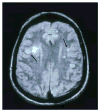Virus vasculopathy and stroke: an under-recognized cause and treatment target
- PMID: 20166970
- PMCID: PMC2909030
- DOI: 10.2174/187152610790963537
Virus vasculopathy and stroke: an under-recognized cause and treatment target
Abstract
While arteriosclerotic disease and hypertension, with or without diabetes, are the most common causes of stroke, viruses may also produce transient ischemic attacks and stroke. The three most-well studied viruses in this respect are varicella zoster virus (VZV), cytomegalovirus (CMV) and human immunodeficiency virus (HIV), all of which are potentially treatable with antiviral agents. Productive VZV infection in cerebral arteries after reactivation (zoster) or primary infection (varicella) has been documented as a cause of ischemic and hemorrhagic stroke, aneurysms with subarachnoid and intracerebral hemorrhage, arterial ectasia and as a co-factor in cerebral arterial dissection. CMV has been suggested to play a role in the pathogenesis of arteriosclerotic plaques in cerebral arteries. HIV patients have a small but definite increased incidence of stroke which may be due to either HIV infection or opportunistic VZV infection in these immunocompromised individuals. Importantly, many described cases of vasculopathy in HIV-infected patients were not studied for the presence of anti-VZV IgG antibody in CSF, a sensitive indicator of VZV vasculopathy. Unlike the well-documented role of VZV in vasculopathy, evidence for a causal link between HIV or CMV and stroke remains indirect and awaits further studies demonstrating productive HIV and CMV infection of cerebral arteries in stroke patients. Nonetheless, all three viruses have been implicated in stroke and should be considered in clinical diagnoses.
Conflict of interest statement
All authors report no conflict of interest.
Figures



References
-
- Lloyd-Jones D, Adams R, Carnethon M, De Simone G, Ferguson TB, Flegal K, Ford E, Furie K, Go A, Greenlund K, Haase N, Hailpern S, Ho M, Howard V, Kissela B, Kittner S, Lackland D, Lisabeth L, Marelli A, McDermott M, Meigs J, Mozaffarian D, Nichol G, O’Donnell C, Roger V, Rosamond W, Sacco R, Sorlie P, Stafford R, Steinberger J, Thom T, Wasserthiel-Smoller S, Wong N, Wylie-Rosett J, Hong Y American Heart Association Statistics Committee and Stroke Statistics Subcommittee. Heart disease and stroke statistics – 2009 update: a report from the American Heart Association Statistics Committee and Stroke Statistics Subcommittee. Circulation. 2009;119:480–486. - PubMed
-
- Gilden DH, Kleinschmidt-DeMasters BK, Wellish M, Hedley-Whyte ET, Rentier B, Mahalingam R. Varicella zoster virus, a cause of waxing and waning vasculitis: The New England Journal of Medicine case 5-1995 revisited. Neurology. 1996;47:1441–1446. - PubMed
-
- Hyman RW, Ecker JR, Tenser RB. Varicellazoster virus RNA in human trigeminal ganglia. Lancet. 1983;2:814–816. - PubMed
-
- Gilden DH, Vafai A, Shtram Y, Becker Y, Devlin M, Wellish M. Varicellazoster virus DNA in human sensory ganglia. Nature. 1983;306:478–480. - PubMed
-
- Gilden DH, Rozenman Y, Murray R, Devlin M, Vafai A. Detection of varicellazoster virus nucleic-acid in neurons of normal human thoracic ganglia. Ann Neurol. 1987;22:377–380. - PubMed
Publication types
MeSH terms
Grants and funding
LinkOut - more resources
Full Text Sources
Medical

